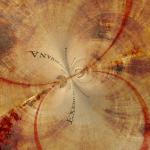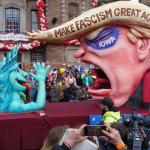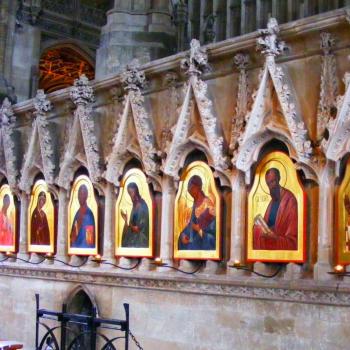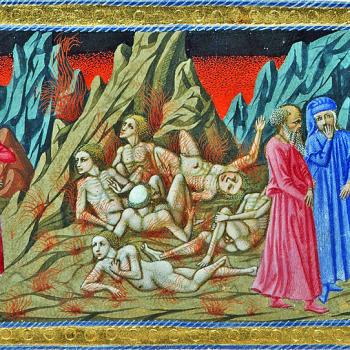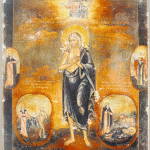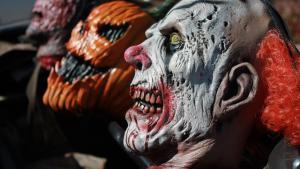 In Dostoevsky’s Brothers Karamazov, Ivan Karamazov was the cool, intellectual brother whose nihilistic rationalism provided the encouragement his half-brother needed in order to kill their father. It was only after the realization of what Smerdyakov had done that Ivan came face to face with his inner demons, to recognize the evil which he had promoted, and accept as a result, his own place in the murder of his father. Likewise, it was only in the recognition that his father’s murder was evil, and that there was a demonic presence, a devil, from which that evil flowed, Ivan felt his life and understanding of the world was overturned and he came to accept that there had to be a God. His whole view of the world was shaken. He had a breakdown. But once he could accept something was truly evil, Ivan could no longer embrace his nihilistic relativism which he had promoted, and so he came forward as a convert to the power of goodness, even love, to the horror of Smerdyakov.
In Dostoevsky’s Brothers Karamazov, Ivan Karamazov was the cool, intellectual brother whose nihilistic rationalism provided the encouragement his half-brother needed in order to kill their father. It was only after the realization of what Smerdyakov had done that Ivan came face to face with his inner demons, to recognize the evil which he had promoted, and accept as a result, his own place in the murder of his father. Likewise, it was only in the recognition that his father’s murder was evil, and that there was a demonic presence, a devil, from which that evil flowed, Ivan felt his life and understanding of the world was overturned and he came to accept that there had to be a God. His whole view of the world was shaken. He had a breakdown. But once he could accept something was truly evil, Ivan could no longer embrace his nihilistic relativism which he had promoted, and so he came forward as a convert to the power of goodness, even love, to the horror of Smerdyakov.
Dostoevsky hit an important point in his novel. The presence of evil demonstrates the reality of goodness. This goes only one way. Goodness does not need evil, but without goodness, there could be no evil. This is because evil is like a parasite which thrives on the good, perverting it while the good is under its control. It embraces the good but turns it inside out. It takes elements of the good which it can use to reshape the meaning of the good, making it lack the proper balance the good needs in order for it to be truly good. This is how evil can tempt us to embrace it as the true good instead of its dark simulacrum. When we realize the failure behind such evil, then we can recognize it as being evil. But how can we do this unless we recognize that there is some good which stands in opposition to it? If there is a devil, whether or not one recognizes the devil as a fallen angel or a personification of evil which tempts us within our own unconscious (and conscious) mind, this means that there has to be a good principle which stands in opposition to it, which the devil attempts to pervert for its own end. While there can be no true rival to God, nonetheless, when we recognize there has to be a good which stands in opposition to evil, then we recognize there has to be a source and foundation for that good, which is what we find with God. Thus, while simple dualism is erroneous because it posits God and the devil, good and evil, as equal but opposite principles, the persistence of evil in the world can be used as a way to point us beyond the evil and to the good.
To exorcise evil, we must not be frightened by it. We must expose it for what it is: weak, puny and self-defeating, for by its nature, evil will self-destruct as it eats of itself and dissolves into nothingness if we do not give it any more fuel to survive. This fuel, of course, comes from the good which it uses for its own perverted end. In exorcising evil, we free this good, allowing it to be restored in harmony which it had lost by the evil which took it over. Thus Ivan Karamazov, though wounded in mind and in heart, begun his restoration with the good once he acknowledged his own evil, that is his own misbegotten justifications for evil; this can be found not only in the way he found that he could love someone else, Katerina Ivanovna, but also to love his brothers despite his previous indifference to them.
This understanding of evil presented by Dostoevsky in his classic novel can be seen at the forefront of the experience surrounding the Western celebration of All Saints. The darkness, All Hallows’ Eve, comes before the brightness of the dawn; evil is revealed in the night, with the ghosts and goblins, before the realization of the good is shown through the march of the saints. The dark underbelly of All Hallows’ Eve should not frighten us; the zombies and ghouls reveal to us our spiritual condition outside of God’s grace. We need to see the evil, to see the decay of the flesh, the cannibalism and dark magic which we are willing to embrace as long as we ignore the devils in our own life, so that we can then recognize the grand design which has been perverted, the grand design which we can join in to receive true the life which raises us from the dead and brings us face to face with God.
Evil is weakened and diminished when it is let out and ridiculed. The monsters which come out and meet us on All Hallows’ Eve reveal the dark underbelly of being, the decay of being which is possible when we do not properly address our own inner demons. We let them out to expose them. They might seem to be given life and power, but in the end, when we recognize them for what they are, we are able to discern them as being merely unreal phantoms which can be easily dispelled. So long as we are afraid of them we give them power, but when we expose them through the masquerade of the night, we then realize they lack true being and so their evil can be overturned. When we give out treats to potentially unruly adolescents, turning them away from mischief and evil tricks, we mirror God giving us grace who with that treat, turns us away from the evil which we would otherwise be tempted to perform.
We must recognize the darkness for what it represents, the lack of light, so that we can then recognize the darkness of sin, with the monstrosities we become through such sin, represents merely the lack of goodness and not some rival principle which is as strong, or perhaps stronger, than the good. Thus, after we carve pumpkins with monstrous shapes, we put candles within and light them at night to reveal that the light is greater than the darkness and cannot be overcome by the darkness itself. No matter how monstrous our turn away from the good, there remains the little good within, the good which can shine bright and fend off the demons, to bring us to safety, especially from ourselves.
All Saints reminds us that the power of the good overcomes the evil. We do not have to ignore the evil. We should not flee from it. We must see it for what it is, a corruption which slowly becomes self-parody as it undermines itself. The darkness which is brought out with people dressing up as monsters in the night, the darkness which many believe to be a dangerous component of the secular celebration of Halloween, is actually a part of the feast itself, and an important part. The devil needs to be revealed. The demonic needs to be exposed for what it is. Once we see it, we cannot reject the notion of the good, and its superiority. Then we truly can understand the glory of all saints, the radiance of the good which lies beyond the darkness itself.
[IMG=Halloween Masks [ CC0 Public Domain] via PxHere]
Stay in touch! Like A Little Bit of Nothing on Facebook


